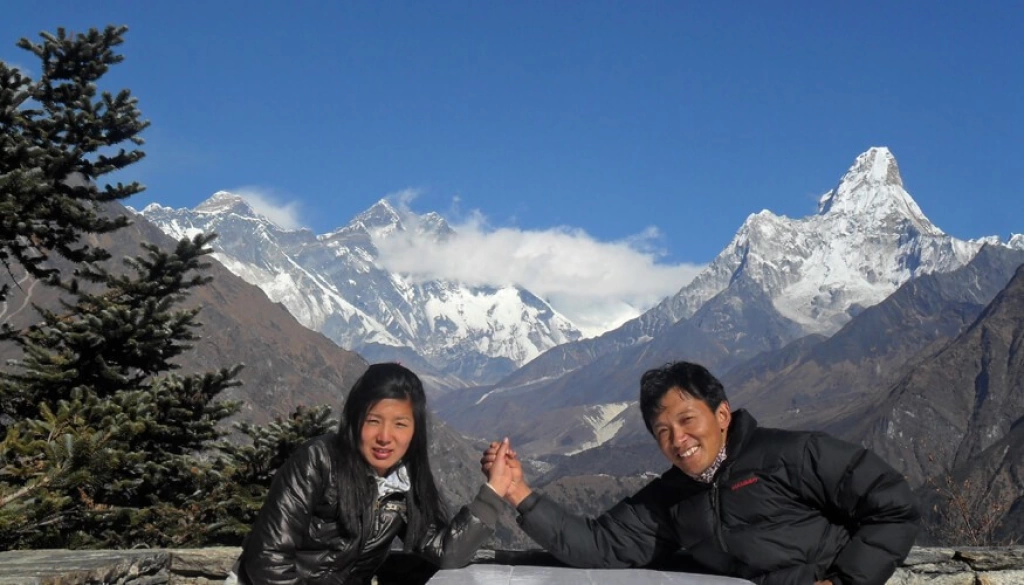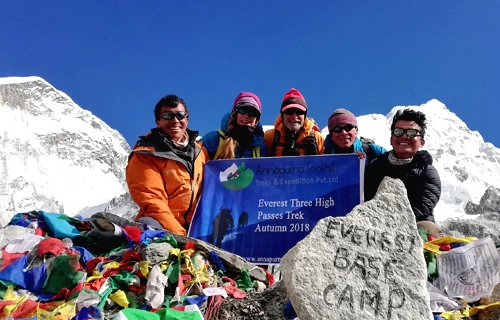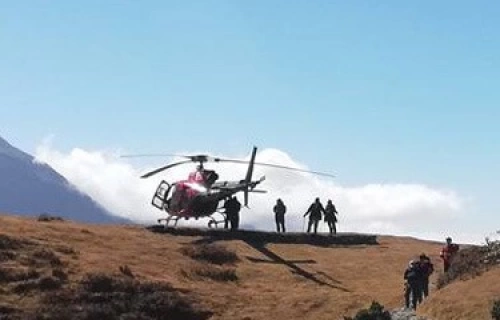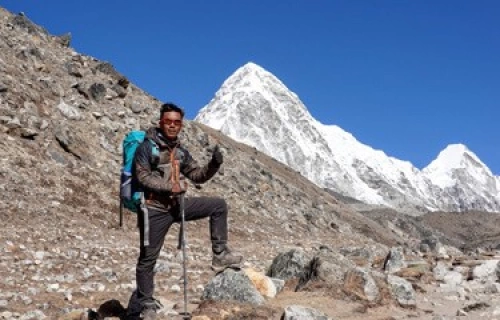Departure Note:
Guaranteed- We already have trekkers booked for those dates and you can join the group.
Available - The date is available to book and once you confirm your trip it will be guaranteed.
Limited - The departure date is filling fast and only limited seats are available to join.
Closed- The Trip cannot be booked on that specific date. Contact us for customized dates.
The departure dates are your arrival dates in Nepal.
We have set dates for departure to the Amazing Jiri to Everest Base Camp Trekking. So, pick your preferable date and let the adventure begin.
Jiri to Everest Base Camp Trekking is available and can be done throughout the year. So, if the date you prefer is not listed on our departure dates then you can contact us directly to book the trip on your own desired date.
We have listed the price up to 12 trekkers at maximum. If you are more than 12 trekkers, then please feel free to contact us for amazing discounted group price and further booking process.
Private Trips to Everest Base Camp is possible on any date of the year. Contact us to design your own private trips with you loved ones.
Solo Trips: Single trekkers are always welcome to join the trek. On your arrival at Kathmandu, you’ll have a single room in Kathmandu Hotel as per your requirement and have to share a room at the local teahouses during the trekking.
Useful Info
Best Seasons for Jiri to Everest Base Camp Trekking:
The best seasons for the Jiri to Everest Base Camp Trek are from September to November and from March to May. These months are known for sunny and warm weather and outstanding views. The summer months from June to August are also beautiful, but the trek can be affected by the monsoon rains.
Jiri to Everest Base Camp is a Tea House/Lodge Trek:
Accommodation is included in the cost of your package. Annapurna Foothills Treks takes great care to arrange the most comfortable accommodation possible throughout your stay.
During the trek, the nights will be spent in clean and comfortable tea houses with plenty of character and good food. The simple rooms usually have two narrow beds. The family run lodges are a great place to get to know the Nepalese people. In Nepalese culture, a guest is equal to god, and surely this has become even more of a reality since the tourism industry has improved their meager opportunities to earn. You will be made very welcome!
Meals:
Three meals a day are included during your Jiri to Everest Base Camp Trek. The menu will be fairly simple, but freshly cooked and hygienic. You can enjoy typical Nepali, Tibetan and Sherpa food, as well as all types of international cuisine. Dinners and breakfasts will be provided in the teahouse/lodge where you spend the night. Lunches will be eaten in a teashop on the way to the destination of the day.
Drinking Water on Jiri to Everest Base Camp Trekking:
We suggest that you drink boiled water or bring chlorine tablets to purify the normal water available in the guest houses along the way. There is a small fee charged for the boiled water. Although mineral water is available in most places, there is no provision to dispose of the plastic bottles, so we encourage the guests to do what they can to protect the environment.
Fitness/Health:
If you have a reasonable level of fitness, this trek should be more than manageable. The altitude becomes more noticeable the higher we go, so we walk at a slow pace and take plenty of breaks to rest and acclimatize.
Local Customs You Should Know About on the Jiri to Everest Base Camp Trekking:
Ethnic groups of the hilly and mountain regions are predominantly Buddhist, and you will see many mani stones, stupas, gumbas and prayer wheels. It is respectful to pass these objects with your right side nearest to the object, in a clockwise direction. Avoid sitting or standing on mani stones, stupas, tables used for worship or anything that is a religious symbol, as that is considered disrespectful.
Travel Insurance for Jiri to Everest Base Camp Trekking:
It is strongly recommended to be sufficiently protected when you go into remote areas. You need specialized travel insurance that covers emergency evacuation, injury, lost baggage, liability and medical treatment. Make sure the insurance covers all the activities that you will be undertaking during your stay in Nepal. Annapurna Foothills Treks and Expeditions Pvt. Ltd. can organize the appropriate medical response based on your policy.
Flight Delay/Cancellation:
Domestic flights to mountain regions can be delayed or cancelled due to bad weather. Be aware that you may have long waits in the airports. From our side, if a flight is cancelled we make sure you get on the next possible flight.
If flight cancellations at the start of your trek delay your trek to the point of disturbing your onward travel schedule, you will be free to choose an alternative trip; there are many excellent options in the Annapurna, Langtang and other regions. If you do not wish to take an alternative trek, and wait in Kathmandu for the flight to Lukla, your original trek may be shortened due to the days lost in waiting. In such case, the client will be responsible to bear all additional expenses including food and accommodation.
If the client wishes to make an alternative arrangement such as a helicopter flight, Annapurna Foothills Treks and Expeditions will assist in making the booking, but will not cover the cost of the alternative arrangement. The refunded money of the unused flight ticket would be credited to the concerned client, however.
There will be no refund for the days of the trek that are missed. You will not be entitled to any refund for services in the package (ie hotel, transport, flight) that you did not use due to the cancellation.
It is advisable to allow one or two extra days at the end of your trip to allow for flight delay/cancellation.
In an emergency, or upon request by our clients, a heli-rescue can be organized. The helicopter costs around USD 3500, and can lift 4-5 persons per flight.
If flight cancellations at the end of your trek delay your return to Kathmandu, you will be responsible for all your expenses during the wait in Lukla.



